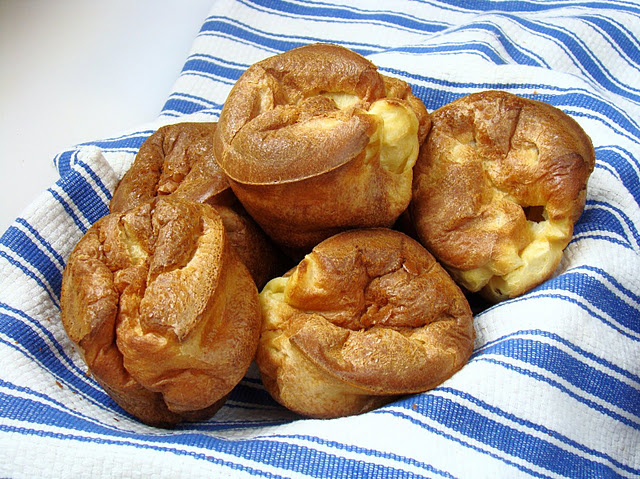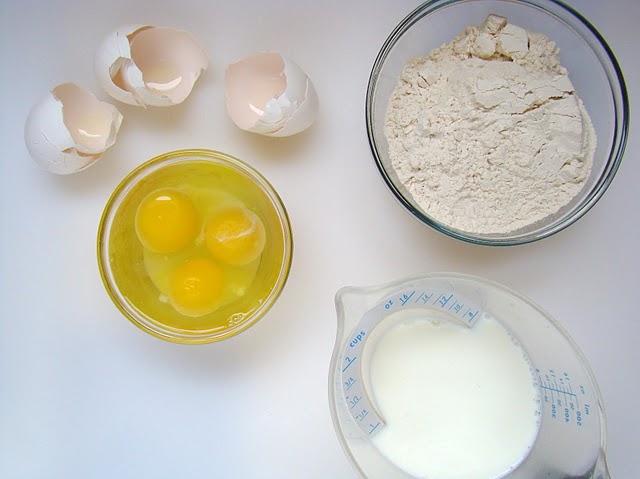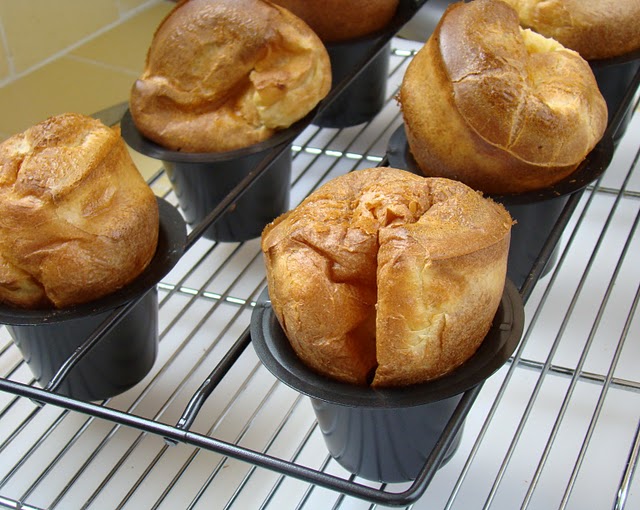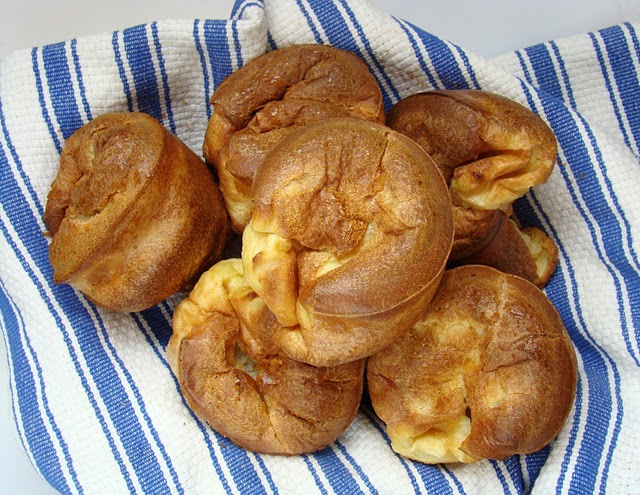Classic Popovers
So, I'm curious, guys, what are some of the most delicious words you can think of? Which is to say, what are the words that just sound so divine while saying them that you want to eat them? To be fair, these sort of exercises are an ongoing thing for me, but all psychological quirks aside, I know I can't be the only one who finds a sort of lip-smacking pleasure in saying the word "cheesecake" in a slow, drawn-out manner, letting each tasty syllable roll off the tongue. I also feel like this about the word "spatula" for reasons that I cannot explain. But certainly we can all agree on the word "popovers" as being a completely edible word. Light, crisp, irresistibly buttery. Say it with me now--popovers. Yum, right?
So there's a couple schools of thought on popovers. Some people like them so crisp, light and hollow that they're almost like pâte à choux (think cream puff shells). Other people like something more doughy with an almost custardy center. I'd like to think this recipe falls somewhere in the middle. And the beauty of it is that I believe it to be adjustable for your tastes. If you like a heartier, eggier end product, use all three eggs, and if you want them drier and lighter, just cut an egg. Either way, the prep here couldn't be simpler--just eggs, milk, flour and a touch of salt, whisked together and in the oven in minutes.
The magic of a popover happens during baking, and this is the time where I can be found with my face pressed up against the glass of the oven door, staring with Mr. Wizard-like amazement as the batter climbs into pillars of golden goodness--pop, pop, pop!--before my very eyes.
The best popover results will come with a real popover pan, the kind with dark colored, narrow, individual cups hanging on thin bars, which allows heat to really circulate around each cup for a maximum rise. But you can totally make them in a muffin tin, or even better, individual thin-walled custard cups set directly on the oven rack, which will most closely replicate a popover pan. But whatever you bake them in, the flavor possibilities for popovers are practically endless here--plain with salted butter and jam for breakfast, grated hard cheese of all sorts (Parm? Cheddar?--awesome), fresh herbs to compliment a main savory dish. Delightful, I'd say.
To get the best rise, gently warm the eggs in a bowl of hot tap water and heat the milk in the microwave before beginning. If you like a slightly drier, more crisp popover, eliminate one of the eggs. And unlike most baking recipes, the texture and flavor of popovers improves with the use of low-fat, not whole, milk.
Makes 6
3 large eggs, at room temperature
1 cup warm milk (low-fat is better than whole--see note)
1 teaspoon kosher salt
1 cup all-purpose flour (measure by spooning and leveling), sifted
Position a rack in the center of the oven and preheat it to 425 degrees. Have ready a 6-cup popover pan (if it's nonstick, no greasing required), or butter 6 custard cups or a muffin tin.
In a large bowl, whisk together the eggs, milk and salt until well-blended. Add the flour and whisk gently to blend. If you're whisking for than a minute or so and some small lumps remain, pour the batter through a sieve to remove them rather than risk overmixing the batter.
Divide the batter equally among the 6 cups (each should be about 1/2 full). Bake for 30-35 minutes until the popovers are impressively puffed and golden. If the popovers are getting too dark, turn down the temperature by about 25 degrees during the last 10-15 minutes of baking.
As soon as the popover come out of the oven, pierce them 2-3 times with the tip of a sharp knife to release steam and help them keep their shape. Unmold and serve as soon as possible.




